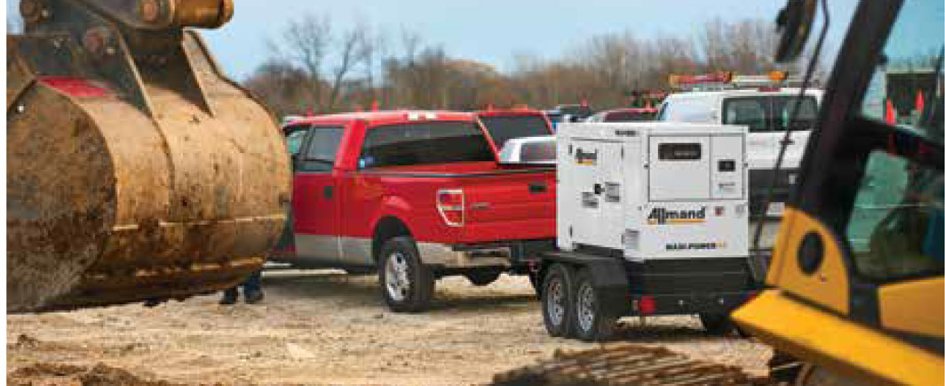
“This is how we’ve always done it” is the most expensive phrase on the jobsite. The fact that one method worked previously does not mean it is still the best or most efficient for getting the job done. Take powering the jobsite for example. In the past, site managers brought in one large generator and put it into a distribution box, which powered various machines across the site. If the generator ran when you were not using power, it was no big deal, but in today’s industry, using the distribution power method can be troublesome because oversized generators are not always run at appropriate load. With new Tier 4 emissions standards, running a generator below nominal load can lead to wet stacking, which occurs when the generator is run on too light a load for the size of the generator and fails to reach the correct operating temperature Then, unburned fuel is exhausted and interpreted as wetness in the exhaust system. This causes the generator to shut down, leading to expensive downtime on the jobsite.
The New Way to Power
For example, if you estimate a power need for around 60 kilowatts, then renting a 65-kilowatt unit (as you traditionally would) ensures you are capable of generating all the power you could ever need on the job. However, the generator would typically be underused and run short of full load. Often, only half the power a generator can produce is utilized on-site. Generally, the consensus has been that having more power than you need serves as a safeguard. More is always better, right? This no longer the case on jobsites. Moving away from this one size fits all mentality can create opportunities for improved operations. Implementing multiple smaller generators promotes a more efficient work site. Strategically placing several generators around the site to provide the power that is needed—when and where it is needed—ultimately saves runtime, prevents downtime and gets the job done according to schedule.
To efficiently power the new jobsite, you need two pieces of information—your overall power demand and your timing demand. Once you have that information, a rental company can work with you to determine how many generators you actually need for the job and how many running watts you need per generator.
Power in Pairs
Breaking away from the tradition of putting one large generator on site offers your crew flexibility. Having multiple small generators instead allows distribution of power around the jobsite to exact areas of need, cutting down on long runs of cabling and improving efficiency. Multiple generators in strategic locations also provide the power needed at the time it is needed. If you have a large piece of equipment that needs power but doesn’t run 8 hours out of the day, you can rent a generator specifically for the time you are running that equipment, while supplying power for the rest of your job with a secondary generator.
In the past, if your generator was faulty or required maintenance, downtime was a given. With this new method of powering the jobsite, operators can have peace of mind, knowing that if something happens to one generator, a second unit can be brought over so that the entire jobsite does not shut down. The reliability of on-demand power ensures the job is never interrupted, saving costs and preserving productivity.
The implementation of Tier 4 emissions regulations also greatly impacts the value of running several small generators at full load, versus having one large, underutilized generator. Tier 4 engines use diesel particulate filters to limit the amount of particulate matter that is emitted through exhaust. The use of these filters, however, means that if you do not run your generator at a nominal load, those particulates begin to block the mesh and can cause airflow to stop.
If the airflow is interrupted, the generator will shut down. Then, you are facing at least one hour of downtime while your generator goes through its regeneration process to clear out particulates. That is an hour that you cannot power your jobsite, and without power, there is no productivity.
The New Jobsite
By changing the way you power your jobsite, you can improve operations and increase uptime and productivity—all while meeting the new Tier 4 emissions standards. Swapping traditional large generators for several strategically placed units across the jobsite provides reliable backup power that will eliminate downtime and unplanned maintenance. Equip your jobsite with the power it needs for a more efficient operation.
